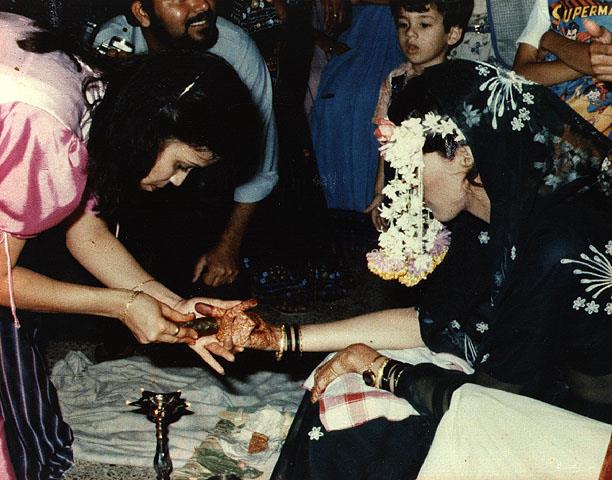
קהילת יהודי מומביי
מומביי, בומביי
עיר-נמל לחוף הים הערבי, צפון מערב הודו.
ראשוני היהודים התיישבו במומביי עם סיפוח העיר לפורטוגל באמצע המאה ה-16 אבל יישוב קבע נוסד בה רק במחצית השנייה של המאה ה- 19 כאשר הגיעו לשם "בני ישראל" מכפרי האיזור קונקאן ויהודי קוצ'ין. את בית-הכנסת הקימו "בני ישראל" ב-1796 ביוזמת שמואל יחזקאל דיבקאר. בגל שני של מהגרים יהודיים למומביי היו סוחרים מסוריה ומסופוטאמיה ויהודים אחדים דוברי ערבית מן העיר סוראט.
נקודת מפנה בתולדות היישוב חלה עם בואה של משפחת הנגיד דוד ששון מבגדאד (1833), שהטביעה את חותמה על חיי החברה והתרבות בעיר בכלל ובקהילה היהודית בפרט. יוצאי ארצות ערב, על יחודם הלשוני ועל הקשר הרוחני עם בגדאד, אף הוציאו שבועון משלהם בשם "דורש טוב לעמו" (1866-1855). חלוצי הדפוס העברי במקום היו האחים מולא אברהם ומשה נתן, אנשי משהד (הקהילה בפרס שנאלצה להמיר את דתה לאיסלאם ב-1838). יהודים מאירופה התחילו להגיע לעיר עם עליית הנאציזם בשנות ה-30, ובתוכם אנשי מדע, רופאים ותעשיינים.
בשנת 1968 היה מספר תושבי מומביי כ-5,370,000. ב-1973 התגוררו בה 3,600 יהודים.
רוב יהודי מומביי היו מ"בני ישראל". עדת הבגדאדים מנתה כמה מאות נפש. בסוף שנות הששים היו בעיר שני בתי ספר ושמונה בתי כנסת, מהם שניים לבגדאדים. המועצה המרכזית של יהודי מומביי, הארגון המאחד את כל מוסדות היהודים בעיר, הופיעה כלפי השלטונות בשם יהדות הודו בכללה; הוא הדין בהסתדרות הציונית במומביי. הפעולה הציונית תפשה חלק נכבד בחיי הציבור היהודי והסוכנות היהודית פעלה בתחום החינוך העברי ולעידוד העלייה. פעלו גם ארגוני נוער וסעד. שלושת העיתונים היהודיים בהודו יצאו לאור במומביי ובה גם שוכנת הקונסוליה הישראלית.
בשנת 1997 ישבו בהודו כולה כ- 6,000 יהודים. רובם במומביי ובסביבותיה.
עיר-נמל לחוף הים הערבי, צפון מערב הודו.
ראשוני היהודים התיישבו במומביי עם סיפוח העיר לפורטוגל באמצע המאה ה-16 אבל יישוב קבע נוסד בה רק במחצית השנייה של המאה ה- 19 כאשר הגיעו לשם "בני ישראל" מכפרי האיזור קונקאן ויהודי קוצ'ין. את בית-הכנסת הקימו "בני ישראל" ב-1796 ביוזמת שמואל יחזקאל דיבקאר. בגל שני של מהגרים יהודיים למומביי היו סוחרים מסוריה ומסופוטאמיה ויהודים אחדים דוברי ערבית מן העיר סוראט.
נקודת מפנה בתולדות היישוב חלה עם בואה של משפחת הנגיד דוד ששון מבגדאד (1833), שהטביעה את חותמה על חיי החברה והתרבות בעיר בכלל ובקהילה היהודית בפרט. יוצאי ארצות ערב, על יחודם הלשוני ועל הקשר הרוחני עם בגדאד, אף הוציאו שבועון משלהם בשם "דורש טוב לעמו" (1866-1855). חלוצי הדפוס העברי במקום היו האחים מולא אברהם ומשה נתן, אנשי משהד (הקהילה בפרס שנאלצה להמיר את דתה לאיסלאם ב-1838). יהודים מאירופה התחילו להגיע לעיר עם עליית הנאציזם בשנות ה-30, ובתוכם אנשי מדע, רופאים ותעשיינים.
בשנת 1968 היה מספר תושבי מומביי כ-5,370,000. ב-1973 התגוררו בה 3,600 יהודים.
רוב יהודי מומביי היו מ"בני ישראל". עדת הבגדאדים מנתה כמה מאות נפש. בסוף שנות הששים היו בעיר שני בתי ספר ושמונה בתי כנסת, מהם שניים לבגדאדים. המועצה המרכזית של יהודי מומביי, הארגון המאחד את כל מוסדות היהודים בעיר, הופיעה כלפי השלטונות בשם יהדות הודו בכללה; הוא הדין בהסתדרות הציונית במומביי. הפעולה הציונית תפשה חלק נכבד בחיי הציבור היהודי והסוכנות היהודית פעלה בתחום החינוך העברי ולעידוד העלייה. פעלו גם ארגוני נוער וסעד. שלושת העיתונים היהודיים בהודו יצאו לאור במומביי ובה גם שוכנת הקונסוליה הישראלית.
בשנת 1997 ישבו בהודו כולה כ- 6,000 יהודים. רובם במומביי ובסביבותיה.